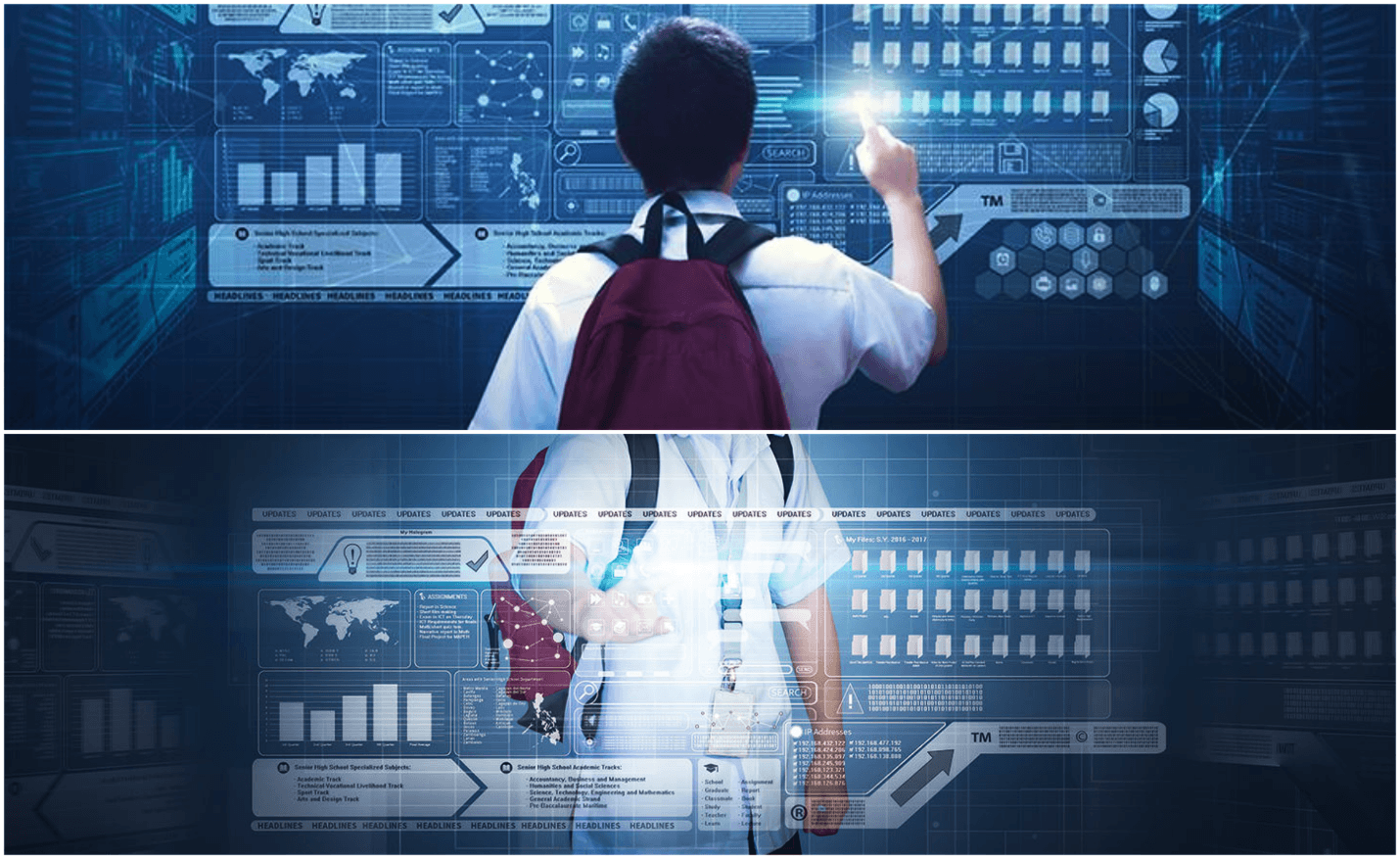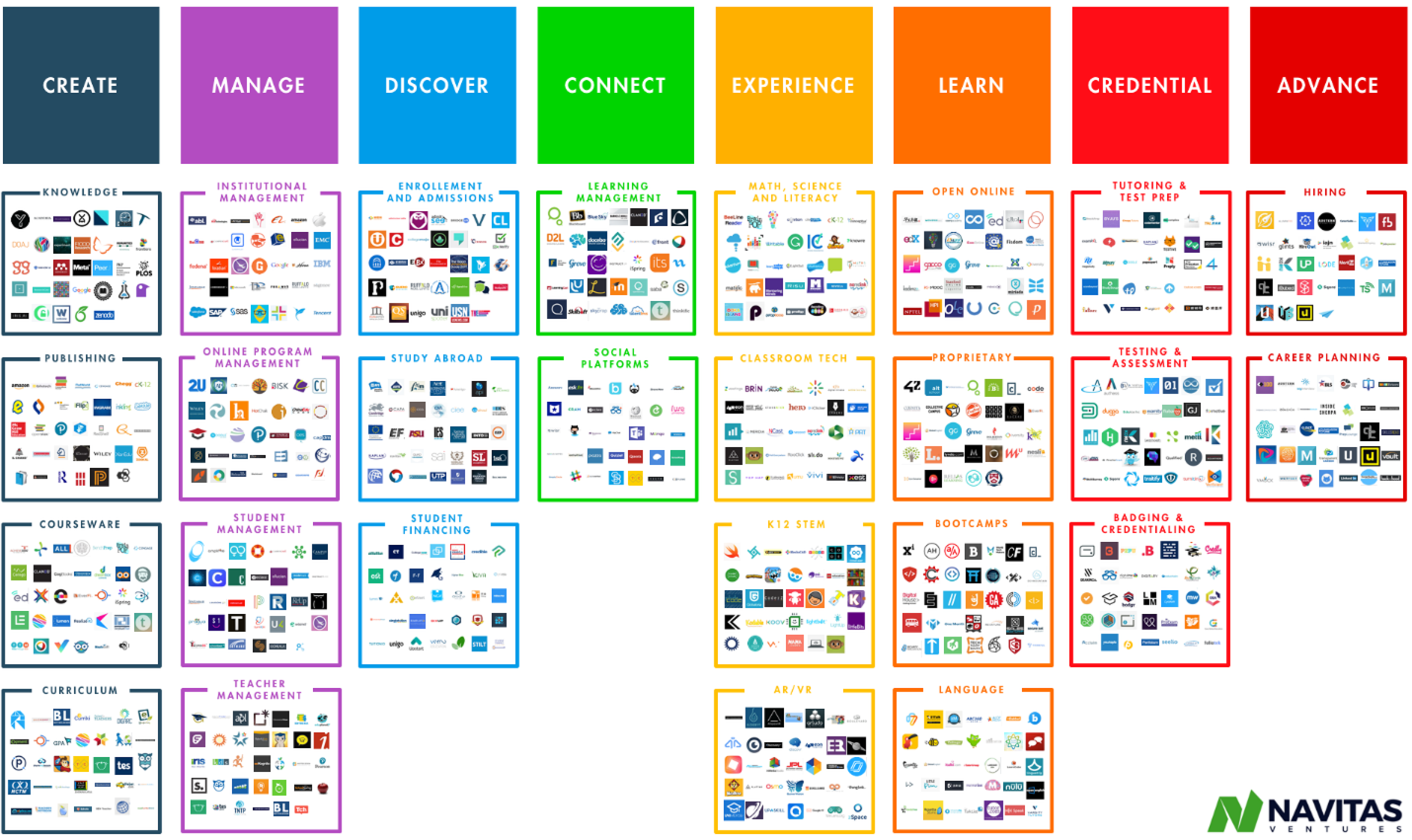- Innovation
- Leadership
- Skills
The Long Read: Global Edtech Landscape - The Next Generation Learning Lifecycle
)

The pandemic notwithstanding, we are currently in the midst of the fourth industrial revolution. The World Economic Forum describes this new era as characterized by “a fusion of technologies that is blurring the lines between the physical, digital, and biological spheres — collectively referred to as cyber-physical systems.” A convergence of Genetics, Nanotechnology, Robotics, 3D Printing, Sensor, Artificial Intelligence and other exponential technologies is ushering a new industrial age that is disrupting all aspects of society. This includes the education sector.
In 2017, investments in the EdTech sector crossed $9 billion. Crunchbase, which maintains a master record of data on the world’s most innovative companies has identified, reviewed and categorised over 2000 new EdTech and educational software companies. There is a bewildering array of new EdTech companies that are creating programmes for coding and robotics, software for AR and VR, content for STEM subjects, online courses for distant learning, and even early learning apps for toddlers and pre-schoolers.
Navitas Ventures is the education venturing arm of Navitas. In 2018, in partnership with Quid, they published Global EdTech Landscape 3.0 — a map of the emerging landscape of education innovation and technology. It maps 26 clusters of 15,000 edtech companies into eight steps they call the Next Generation Learning Lifecycle: Create, Manage, Discover, Connect, Experience, Learn, Credential, Advance.

Create
“This is arguably where the digital transformation of education began: the creation of learning content, from course materials and assessment sheets to textbooks.”
Formerly, educational content was created by Universities and big publishing houses. Creation of educational content is now democratized and more easily available on the net. There are numerous apps, websites, and online courses that all students to access Knowledge and Research. And an increasing number of educational and academic journals are available for free or at an affordable price.
Information is increasingly becoming obsolete faster than ever. Textbooks become outdated faster than expected. A range of new online publishers and rental apps are now allowing for the publishing and sharing of content. Spotify-like models are allowing learners and educators to pick and mix and create educational playlists that are relevant to their individual interests and personal tastes.
“Digital courseware can be used to deliver math, science, literacy, language, and testing and assessment materials. Courseware providers often supply their own content, becoming MOOCs (Massive Open Online Courses). Many have grown to include Learning Management System (LMS) functionality and, with their orientation around learning objects, promise better learner outcomes through personalization and adaptability.” Various new educational startups are offering curriculum and lesson plans and allowing educators to share and collaborate.
Manage
“This area of transformation supports the management of the three dimensions of education as an operational business: the institution itself, students and staff.”
For the most part, institutional management systems are run by big players such as Oracle, Cisco, or SAP. With the new emphasis on data collection and data analysis schools are increasingly looking for personalised educational management systems. Schools have traditionally focused on face-to-face teaching. Which is why they are starting to be increasingly more reliant on Online Programme Management systems, Student Management systems, and Teacher Management systems to meet student expectations, enhance the student experience and provide alternate revenue and growth. New management systems will allow for improved operational efficiency and better staff recruitment and development.
Discover
“This step in the education journey helps prospective students find the right program or pathway for their needs, allows them to apply online, and also helps them understand their options for funding their study.”
A raft of new educational technologies is emerging that allow for new international learning pathways, and student financing. These technologies also help make enrollments and admissions easier.
Connect
“Technology platforms are also connecting students with study resources, with their teachers, and with each other.”
New digital ecosystems and social platforms are emerging that are allowing learners to connect and collaborate in unprecedented ways. A plethora of online tools allows learners to connect with mentors, tutors, parents, alumni, and peers in different parts of the world. Consequently, this is leading to a rise in social learning. (Social Learning Theory posits that people learn from one another, via observation, imitation, and modeling. The theory has often been called a bridge between behaviorist and cognitive learning theories because it encompasses attention, memory, and motivation.)
Experience
“Teaching the next generation of learners to think creatively, solve problems and collaborate in new ways requires immersive, engaging learning tools.”
We once accessed the written word via the page. Today we access it via a screen. Today, more than 5 billion screens illuminate our lives. Digital Information could be replicated and spread instantly. This produced the greatest flowering of human achievement the world has ever seen — a new golden age of creative works. As Kevin Kelly points out we have become People of the Screen.
In previous decades, students accessed information primarily through textbooks or through notes dictated or handed out by teachers. With the advent of the internet, we began seeing the first e-books and online courses. This digitization of content marked a new revolution and has led to a plethora of edtech offerings that focus on new and novel ways of delivering content that allow students to experience new knowledge in new and exciting ways. We are seeing an increased focus on game-based learning and gamification. There is also an increase in the development of adaptive learning platforms informed by narrow artificial intelligence. Content for AR and VR platforms is still in the developmental stage — but it stands poised to become a multi-billion-dollar industry very quickly. AR and VR offering will revolutionize how students experience education.
Learn
“Old and new models of learning are combining to create a blended, flexible approach tailored to specific student and program needs.”
For most of the 19th and 20th century, students received their education in conventional classrooms in brick and mortar schools. Today, however, students have increased access to smartphones and wireless internet. How students learn is now in a massive transition phase. Massive Open Online Courses (MOOCs) are free online courses available for anyone to enrol. MOOCs provide an affordable and flexible way for students (and adults) to learn new skills and knowledge — often for free — from some of the best universities in the world.
According to MOOC directory Class Central, over 58 million students registered for at least one MOOC between 2011 and 2016, universities posted over 6,850 courses, and over 700 universities took part. 2016 alone saw 23 million students sign up for the first time. More and more universities from diverse countries are contributing to the global repository of MOOC content. Organizations like Awecademy offer cutting-edge future-focused proprietary educational content online and platforms like Udemy allow educators the option of creating courses — thus democratizing the process creation and distribution of educational content.
In addition to MOOCs, an increasing number of students are choosing to learn through boot camps. These are part-time or full-time educational programmes that are run during the weekend or during the summer and often serve as a supplement to mainstream conventional education.
Credential
“With the constant need to re-skill over a lifetime, we’ll require new ways of recognizing and verifying knowledge and skills. These new credentials will be flexible, portable and personalized, and recognized globally by both education and industry sectors.”
For the longest time, credentialing bodies were often Universities and credentialing was a top-down process. They used two systems to measure academic qualification: instruction time (that translate into credit hours) and exam performance (that translated into grades). Currently, however, new technologies are allowing for new ways of credentialing skills and knowledge. Various tutoring and test prep apps are now available that allow students to move away from face-to-face interaction. A range of MOOCs provide proprietary credits and credentialing often based on stackable nano degrees. Other educational platforms offer open badging systems, e-portfolios, and credentialing services using blockchain technology.
Advance
“Post-secondary education plays a crucial role in developing the skills and capabilities employers need. So, the final step in the lifecycle aims to bridge study and work.”
There is an increased emphasis on real-world-learning. Traditionally, students would seek out career counsellors, graduate recruitment fairs, and employment websites. However, today we see a massive range of new portals, apps, platforms, and websites that help connect students with peers, mentors, and tutors. We are also seeing increased personalization in allowing for a one-to-one connection between students possessing certain skills with appropriate work opportunities. Several new startups are reimagining and repackaging how students are offered internship opportunities.
Given the post-pandemic new reality we now find ourselves in, edtech will play an even bigger role in the future of education than ever before. We will see an increase in sophisticated educational gadgets, gizmos, apps, and web 2.0 tools that will add to the paradox of choice we find ourselves in. The challenge will be how to choose and how to make a decision when we’re faced with an avalanche of choice.
Recommended Content
-
In conversation with Eduardo Briceño
28 Feb 2022 Eduardo Briceño, Growth Mindset Keynote SpeakerBett 2022 keynote speaker and growth mindset expert Eduardo Briceño shares his thoughts on the role of growth mindset in a time of unprecedented disruption and what this means for the education commun ... -
Esports: Not just for the players
28 Feb 2022 Written by Laura HallEsports is quickly becoming one of the fastest growing sectors for education. -
Microsoft Education tools that supported learning in 2021
20 Jan 2022 By Microsoft Education TeamMicrosoft looks back on what resources changed the game for teaching and learning in 2021.

)
)
.png/fit-in/500x500/filters:no_upscale())
)
)
)
)
)
)
)
)
)